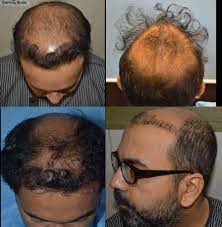
Understanding Hair Transplant Failures: Causes, Prevention, and Solutions
Dealing with Hair Transplant Failures: Tips for Recovery and Restoration
Hair transplantation is a widely popular procedure for individuals seeking to restore their hair and regain their confidence. While hair transplants generally yield successful outcomes, there are instances where the results may not meet expectations, leading to hair transplant failures. In this article, we will delve into the causes of hair transplant failures, discuss prevention strategies, and explore solutions for recovery and restoration, ensuring a satisfying and successful hair transplant experience.
Hair transplant failures can occur due to various factors, ranging from patient-related issues to technical challenges. Understanding these causes is crucial in preventing and addressing potential failures. Let’s explore some common reasons behind hair transplant failures:
- Poor Candidate Selection: Not all individuals are suitable candidates for hair transplantation. Factors such as inadequate donor hair supply, unrealistic expectations, or underlying medical conditions may contribute to the failure of the procedure. Thorough evaluation and proper patient selection are essential to ensure successful outcomes.
- Inadequate Surgical Technique: The skill and expertise of the surgeon play a significant role in the success of a hair transplant. Inadequate surgical techniques, such as improper graft placement, excessive extraction, or poor angulation of hair follicles, can result in unnatural-looking results or low hair survival rates.
- Insufficient Donor Hair Supply: Hair transplantation relies on a sufficient supply of donor hair from the patient’s own scalp. In cases where there is inadequate donor hair availability or improper harvesting techniques, the transplanted hair may not achieve the desired density or coverage, leading to unsatisfactory results.
- Inadequate Postoperative Care: Following the hair transplant procedure, proper postoperative care is crucial for optimal healing and hair growth. Failure to adhere to the recommended care instructions, such as avoiding excessive physical activity or neglecting scalp hygiene, can impact the success of the transplant.
Experiencing a hair transplant failure can be disheartening, but there are strategies and solutions to help recover and restore the results. Here are some tips for dealing with hair transplant failures:
- Consult with a Hair Transplant Specialist: If you are dissatisfied with the results of your hair transplant, it is essential to consult with a qualified hair transplant specialist. They can evaluate your situation, identify the causes of the failure, and recommend appropriate solutions.
- Revision Procedures: In some cases, revision procedures may be necessary to address the failed transplant. This may involve correcting graft placement, improving density, or redistributing hair follicles. A skilled and experienced surgeon can determine the best approach to achieve the desired results.
- Non-surgical Hair Restoration Options: Non-surgical hair restoration methods, such as medication, laser therapy, or scalp micropigmentation, can be considered as complementary treatments or alternatives to surgical revisions. These options can help enhance hair growth, improve density, and provide a more satisfactory appearance.
- Patience and Time: It is important to remember that hair transplant results take time to fully develop. In some cases, what may initially appear as a failure could improve over time as the transplanted hair follicles grow and mature. It is essential to be patient and allow for the natural healing and growth process to take place.
Conclusion:
While hair transplant failures can be disheartening, it is important to understand that they can occur due to various factors, including poor candidate selection, inadequate surgical techniques, insufficient donor hair supply, and inadequate postoperative care. However, there are solutions and strategies available to address hair transplant failures and achieve satisfactory results.
If you have experienced a hair transplant failure, it is crucial to consult with a qualified hair transplant specialist who can evaluate your situation and recommend appropriate solutions. This may involve revision procedures to correct graft placement, improve density, or redistribute hair follicles. Non-surgical hair restoration options such as medication, laser therapy, or scalp micropigmentation can also be considered as complementary treatments or alternatives to surgical revisions.
It is important to be patient and allow time for the natural healing and growth process to take place. Hair transplant results take time to fully develop, and what may initially appear as a failure could improve over time as the transplanted hair follicles grow and mature. Following proper postoperative care instructions and maintaining good scalp hygiene can also contribute to successful recovery and restoration.
In conclusion, while hair transplant failures can occur, they can be addressed and overcome through proper evaluation, consultation with a specialist, and consideration of revision procedures or non-surgical options. By understanding the causes of hair transplant failures and seeking appropriate solutions, individuals can achieve satisfactory results and regain their desired hair density and appearance. Remember, with the right guidance and patience, recovery and restoration are possible even after experiencing a hair transplant failure.



